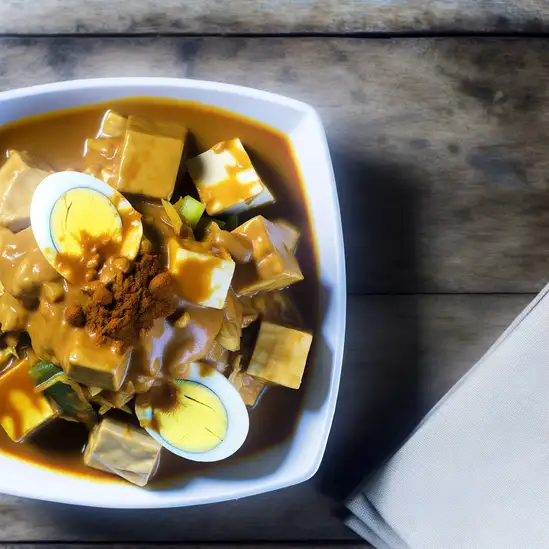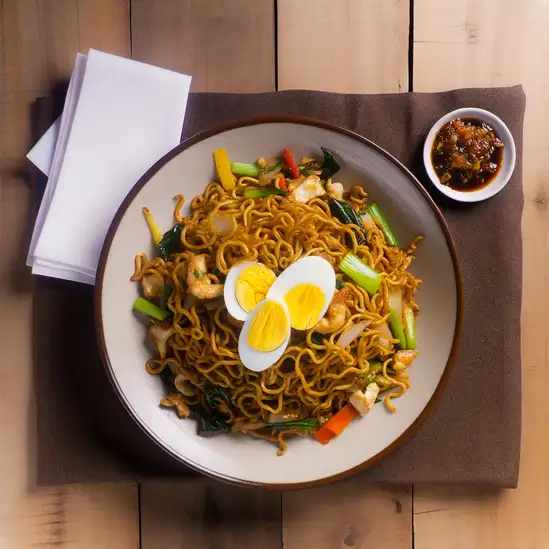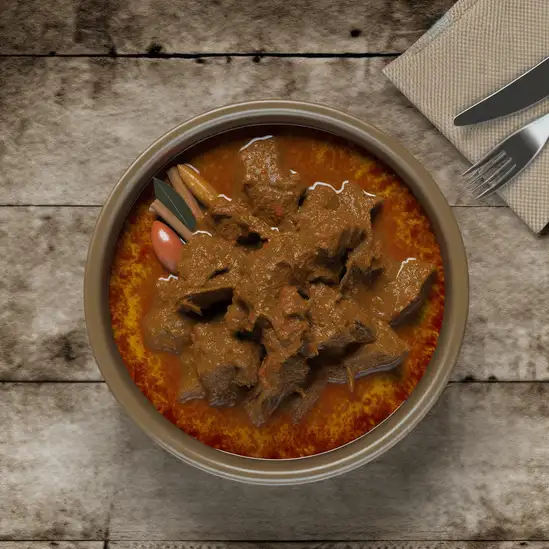


If you’re craving a place where laid-back beach vibes meet a buzzing creative spirit,Canggu is where you want to be. Imagine waking up to the gentle crash of waves,the salty breeze mingling with the rich aroma of freshly brewed coffee from a nearby café. It’s a place where surfers paddle out at dawn,and yogis stretch under swaying palm trees,all while the sun paints the sky in soft pastels. The energy here feels both relaxed and alive,like the town itself is breathing in rhythm with the ocean. Walking through Canggu’s streets,you’ll notice a vibrant mix of rustic warungs serving up spicy sambal and fresh seafood,alongside trendy spots dishing out smoothie bowls and artisan espresso. The soundscape is a blend of laughter,indie tunes spilling from open windows,and the occasional clink of glasses as friends toast to another perfect day. The rice paddies that frame the town add a lush,green contrast to the sandy shores,reminding you that this place is as much about nature as it is about culture. What really makes Canggu special is its welcoming spirit. It’s a melting pot of locals,expats,and travelers who all seem to share a love for good vibes and genuine connection. Whether you’re exploring street art,hunting down the best taco stand,or simply watching the sunset from a beach bar,there’s a warmth here that makes you feel like you’ve found a second home. Trust me,once you’ve felt Canggu’s pulse,you’ll want to come back again and again.
The information on this page is currently being reviewed by Tripkliq and should be used as a guide only
Eng word: Hello
Eng pronunciation: HAH-loh
Local language: Halo
Eng word: Goodbye
Eng pronunciation: suh-LAH-maht TING-gahl
Local language: Selamat tinggal
Eng word: Thank you
Eng pronunciation: teh-REE-mah KAH-see
Local language: Terima kasih
Eng word: How much
Eng pronunciation: buh-RAH-pah
Local language: Berapa
Eng word: Toilet
Eng pronunciation: TOY-let
Local language: Toilet
Eng word: Help me
Eng pronunciation: TOH-long SAH-yah
Local language: Tolong saya
Eng word: Yes
Eng pronunciation: YAH
Local language: Ya
Eng word: No
Eng pronunciation: TEE-dahk
Local language: Tidak
Eng word: Excuse me
Eng pronunciation: puhr-MEE-see
Local language: Permisi
Canggu is home to some of Bali's ancient rice terraces, which have been cultivated for centuries. These terraces are a testament to the region's agricultural heritage and offer stunning landscapes for visitors.
The Subak irrigation system, a UNESCO World Heritage site, is an ancient water management system used in Canggu. This system reflects the Balinese philosophy of Tri Hita Karana, which emphasizes harmony between humans, nature, and the spiritual realm.
Pura Batu Bolong is one of the significant temples in Canggu. This seaside temple is known for its unique rock formations and offers a serene spot for visitors to experience Balinese spirituality and culture.
Canggu has a rich surfing history, with its beaches becoming popular surf spots since the 1970s. Echo Beach and Batu Bolong Beach are particularly famous for their consistent waves, attracting surfers from around the world.
Canggu is surrounded by traditional Balinese villages where visitors can experience local customs, traditional architecture, and community life. These villages offer a glimpse into the island's cultural heritage.
Canggu hosts various cultural festivals throughout the year, such as the Galungan and Kuningan festivals. These events celebrate the victory of good over evil and are marked by vibrant ceremonies, traditional dances, and offerings.
The traditional rice barns, known as 'lumbung,' can still be found in Canggu. These structures are used to store rice and are an important part of the region's agricultural history.
Canggu is a hub for Balinese art and craft, with numerous galleries and workshops showcasing traditional and contemporary works. Visitors can explore local art forms, including painting, sculpture, and weaving.
During the Dutch colonial period, Canggu, like much of Bali, experienced significant changes. Some colonial-era buildings and influences can still be seen in the architecture and infrastructure of the area.
In Canggu, the most common Power Adaptor is Type C, Type F.



A traditional Balinese dish of roasted suckling pig, seasoned with a blend of spices and served with rice and vegetables.

Minced meat mixed with grated coconut and spices, wrapped around bamboo sticks and grilled, often made with fish or chicken.

A mixed rice dish served with a variety of side dishes, including meats, vegetables, and sambal, offering a taste of Indonesian flavors.

A salad of boiled vegetables, tofu, and hard-boiled eggs, topped with a rich peanut sauce, perfect for a healthy meal.

A Balinese dish of chicken marinated in a mixture of spices, wrapped in banana leaves, and slow-cooked until tender.

Indonesian fried noodles stir-fried with vegetables, eggs, and a choice of meat, often served with a side of sambal.

A slow-cooked beef dish in a rich and spicy coconut milk sauce, originating from the Minangkabau ethnic group of Indonesia.

A savory chicken porridge topped with shredded chicken, fried shallots, and a drizzle of soy sauce, often enjoyed for breakfast.
If you ever find yourself craving a place where time slows down just enough to savor every moment,Ubud is that kind of sanctuary. Nestled in the lush heart of Bali,this town hums with a gentle rhythm—part spiritual retreat,part creative hub. Walking through its streets,you’ll catch the scent of frangipani and incense mingling with the earthy aroma of wet rice fields nearby. The air feels alive,filled with the soft chatter of locals,the distant clink of gamelan music,and the occasional call of a rooster greeting the dawn.
Ubud’s charm lies in its seamless blend of tradition and artistry. Temples with intricate stone carvings peek through vibrant greenery,while open-air markets burst with colorful textiles,hand-carved masks,and fresh tropical fruits. You can sip on a rich,earthy cup of Balinese coffee at a cozy café,watching artisans craft delicate silver jewelry or dancers rehearsing for an evening performance. It’s a place where culture isn’t just observed—it’s lived and breathed.
What really stays with you is the warmth of the people and the sense of connection to nature and spirit. Whether you’re wandering through the terraced rice paddies,joining a yoga class overlooking the jungle,or simply sitting by the Campuhan Ridge Trail at sunset,Ubud invites you to slow down,breathe deeply,and soak in a world that feels both ancient and vibrantly alive.
Denpasar has this vibrant,lived-in energy that instantly pulls you in. It’s not the polished tourist hub you might expect from Bali,but rather the bustling heart where locals go about their daily lives with warmth and rhythm. Walking through its streets,you’ll hear the hum of motorbikes weaving through traffic,the chatter of market vendors calling out fresh produce,and the occasional clang of temple bells weaving into the city’s soundtrack. The air carries a mix of fragrant spices,sizzling street food,and the earthy scent of incense from nearby shrines.
What I love most about Denpasar is how it feels like a genuine slice of Balinese culture. The city pulses with tradition—colorful ceremonies unfold in the temples,and you’ll spot locals dressed in sarongs,carrying offerings with quiet reverence. At the same time,there’s a youthful buzz in the cafes and art spaces,where creativity bubbles alongside age-old customs. It’s a place where you can savor a plate of spicy babi guling from a humble warung,then wander through the art markets filled with intricate wood carvings and vibrant paintings.
Denpasar invites you to slow down and soak in the everyday magic—the warmth of the people,the rich smells,and the lively streets. It’s a city that doesn’t shout for attention but rewards those who take the time to explore its layers. If you want to experience Bali beyond the beaches,Denpasar offers a genuine,colorful glimpse into the island’s soul.
Imagine stepping into a place where the sun kisses your skin,the ocean hums a steady rhythm,and the air carries the scent of salty waves mixed with sizzling street food. That’s Kuta for you—a lively beach town in Bali that pulses with energy but still feels effortlessly laid-back. From the moment you arrive,you’re wrapped in a warm,welcoming vibe that’s both vibrant and relaxed. The beach stretches wide,dotted with surfers catching waves and locals selling fresh coconut water,while the sunset paints the sky in fiery oranges and pinks.
Walking through Kuta’s streets,you’ll hear a blend of languages,laughter,and the occasional beat of gamelan music drifting from a nearby warung. The town’s character is a colorful mix of traditional Balinese culture and a buzzing international crowd,creating a unique atmosphere where ancient temples sit just blocks away from lively markets and buzzing nightlife. The aroma of satay grilling over open flames mingles with the tropical flowers blooming nearby,inviting you to slow down and savor every moment.
What makes Kuta truly special is how it balances excitement with ease. Whether you’re learning to surf,bargaining for handmade crafts,or simply lounging on the beach with a fresh mango smoothie in hand,there’s a genuine warmth in the air. It’s a place that invites you to dive into its rhythm,soak up its stories,and leave with a heart full of memories and a little more sun-kissed than when you arrived.
Imagine stepping into a place where the ocean breeze carries the scent of salt and frangipani,and the rhythm of traditional gamelan music hums softly in the background. That’s Lombok for you—a vibrant island that feels both alive and laid-back at the same time. Unlike its flashier neighbor Bali,Lombok has this raw,untouched charm that invites you to slow down and really soak in the moment. The beaches here aren’t just pretty; they’re vast stretches of powdery white sand meeting turquoise waves that seem to whisper stories of ancient fishermen and island life.
Walking through the local markets,you’ll hear the lively chatter of vendors selling fresh spices,tropical fruits,and handwoven textiles. The air is thick with the aroma of grilled satay and sweet coconut,tempting you to try every bite. The Sasak people,with their warm smiles and rich traditions,add a deep cultural layer to the island’s character. You might catch a glimpse of their intricate weaving or hear tales of their unique ceremonies,which feel like a bridge between past and present.
What really stays with you about Lombok is its balance—between adventure and tranquility,nature and culture. Whether you’re hiking up Mount Rinjani’s misty slopes,diving into vibrant coral reefs,or simply sipping a fresh coconut by a quiet beach,there’s a genuine sense of connection here. It’s a place that doesn’t just fill your camera roll but leaves a quiet imprint on your heart.
If you find yourself wandering through Kota Administrasi Jakarta Pusat,you’ll immediately notice the pulse of a city that’s both historic and buzzing with modern energy. It’s a place where colonial-era buildings stand shoulder to shoulder with sleek skyscrapers,creating a fascinating blend of old and new. Walking down the streets,you can almost hear the echoes of history mingling with the chatter of office workers and street vendors. The air carries a mix of aromas—from the rich,spicy scent of street food stalls grilling satay to the faint,comforting smell of freshly brewed kopi from tiny warungs tucked in corners.
What really makes Jakarta Pusat special is its vibrant character. It’s the heart of the city’s administrative and cultural life,so you’ll find a lively mix of people—government officials,artists,students,and families—all weaving their stories into the urban fabric. The bustling markets,like Pasar Baru,invite you to haggle over colorful textiles and local snacks,while nearby museums and galleries offer a quiet retreat into Indonesia’s rich heritage.
There’s a rhythm here that’s both fast-paced and inviting. Whether you’re sipping a sweet es cendol under the shade of a tree in Merdeka Square or catching the golden light reflecting off the National Monument at dusk,Jakarta Pusat feels alive in a way that’s deeply human and endlessly fascinating. It’s a city that invites you to slow down,look around,and soak in the layers of life unfolding all at once.
Surabaya pulses with an energy that’s both vibrant and welcoming,a city where history and modern life dance side by side. As you wander through its bustling streets,you’ll catch the scent of sizzling satay mingling with the salty breeze from the nearby harbor. The city hums with the chatter of locals bargaining in lively markets,the clatter of motorbikes weaving through traffic,and the distant call of street vendors selling fresh tropical fruits. It’s a place where every corner tells a story—from colonial-era buildings standing proudly alongside sleek skyscrapers to colorful murals that splash life onto old walls.
What really makes Surabaya special is its character:tough yet warm,a city that’s seen its share of history but never lost its heart. The people here are fiercely proud and incredibly friendly,always ready to share a smile or a recommendation for the best local warung. Dive into the food scene and you’ll find yourself savoring rich,spicy flavors—like the famous rawon,a dark beef soup that’s both comforting and bold,or the sweet,sticky lontong balap that fills the air with fragrant spices.
Evenings in Surabaya have their own magic. The city lights flicker on,and the streets fill with the sounds of gamelan music drifting from cultural performances or the laughter spilling out of cozy cafes. Whether you’re exploring the historic old town or simply sipping kopi on a street corner,Surabaya invites you to slow down,soak in its layers,and feel the heartbeat of a city that’s alive in every sense.
Skimming devices are installed on ATMs to steal card information, leading to unauthorized withdrawals from tourists' accounts.
Tourists book accommodations online that either do not exist or are significantly different from the advertised photos and descriptions.
Vendors on the beach charge inflated prices for food, drinks, or souvenirs, especially if tourists do not confirm prices beforehand.
Money changers offer attractive exchange rates but use sleight-of-hand tricks to shortchange tourists during transactions.
Imposters posing as police officers stop tourists on scooters and demand cash fines for fabricated traffic violations.
Tourists are sold fake tickets for attractions, events, or ferries, leaving them stranded or unable to access the service.
Tourists are sold fake or subpar tour packages that do not deliver the promised experiences or services.
Rented scooters are stolen, and tourists are held responsible for the loss, often leading to disputes with rental companies.
Unmetered taxis or private drivers charge exorbitant prices for short rides, especially in areas with limited transportation options.
Tourists are charged for pre-existing damages to rented scooters or are forced to pay inflated repair costs for minor scratches.
Indonesia has very strict drug laws, and Canggu is no exception. The possession, use, or trafficking of illegal drugs can result in severe penalties, including long prison sentences and even the death penalty. Tourists should avoid any involvement with illegal drugs to ensure their safety and compliance with local laws.
In Canggu, Indonesia, smoking is generally allowed in outdoor areas and designated smoking zones. However, smoking is prohibited in indoor public places, including restaurants, bars, and public transportation. Tourists should look for 'No Smoking' signs and respect local regulations to avoid fines.
Vaping in Canggu follows similar regulations to smoking. It is allowed in outdoor areas and designated zones but prohibited in indoor public spaces. Tourists should be mindful of local customs and regulations regarding vaping to avoid any legal issues.
What are other people saying about Canggu?
Recent Social posts about Canggu
There is nothing to show you for now.